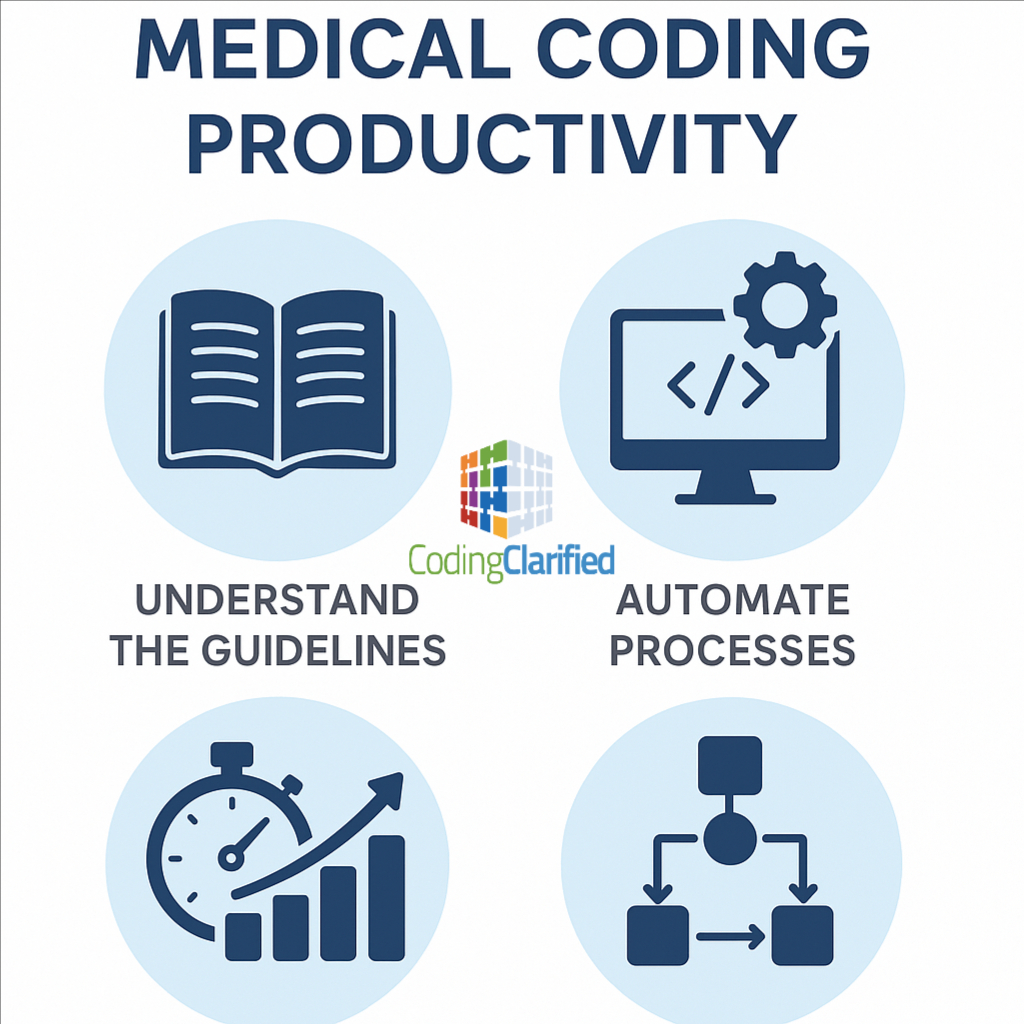How to Increase Medical Coding Productivity: Tips for Coders and Billing Teams
In the fast-paced world of healthcare, accurate and efficient medical coding is critical—not only for timely reimbursements but also for compliance and operational success. However, maintaining high productivity while ensuring precision can be a challenge. Whether you’re a new coder or a seasoned professional, boosting productivity requires a combination of strategy, workflow optimization, and smart technology use.
Master Your Code Sets
Understanding and memorizing frequently used ICD-10, CPT, and HCPCS codes can significantly cut down on time spent searching. Use coding flashcards, cheat sheets, or coding apps to reinforce your knowledge. The more fluent you are, the faster and more accurately you’ll work.
Leverage Coding Software & Tools
Utilize certified coding software and electronic health record (EHR) systems that support:
-
Auto-suggest features
-
Code look-up functions
-
Integrated guidelines and edits
Natural Language Processing (NLP) tools and computer-assisted coding (CAC) systems can also help improve speed—just ensure you always validate the output.
Create a Distraction-Free Workspace
Even in remote settings, productivity can dip due to distractions. Set up a quiet, comfortable, and well-lit space dedicated to coding. Use noise-canceling headphones and limit social media or phone use during focused work periods.
Batch Similar Tasks
Group coding tasks by specialty or procedure type. This reduces cognitive switching and improves rhythm. For example, batching all radiology encounters together allows you to stay focused on a specific code set and documentation style.
Prioritize Documentation Review
Inaccurate or incomplete documentation is a major productivity killer. Work closely with providers to improve clarity and completeness. Implement queries when necessary—but aim for documentation improvement at the source.
Use Productivity Benchmarks
Track your performance using industry benchmarks (e.g., 25-35 records per hour for outpatient coding, depending on complexity). Regularly audit your work to balance speed with accuracy.
Decision Health’s Coding Productivity Benchmarks https://decisionhealth.com/static/whitepaper/
Coding Productivity vs. Coder Productivity https://www.aapc.com/blog/89172-coding-productivity-vs-coder-productivity/?srsltid=AfmBOoqgzsMwB2yv9VpuLGGS7dptfItjVEt9yLu2bFoWksmB9AdtkTC7
Minimize Rework
The time spent correcting denials or audits eats away at productivity. Reduce errors by coding correctly the first time—review NCCI edits, modifier usage, and payer-specific guidelines during initial coding.
Stay Updated
Payer rules, coding guidelines, and reimbursement policies change regularly. Stay current with continuing education (CEUs), AAPC/AHIMA webinars, and CMS updates to avoid costly mistakes and boost confidence.
Set Daily Coding Goals
Break down productivity expectations into manageable daily or hourly goals. Use a timer (like Pomodoro technique: 25 minutes coding, 5-minute break) to stay focused and avoid burnout.
Ask for Feedback and Support
If you’re part of a team, don’t hesitate to ask for help. Engage in peer review, attend coding huddles, and share tips with your coworkers. Collaboration often leads to better workflow strategies and faster problem-solving.
Improving medical coding productivity isn’t about rushing—it’s about working smarter. By combining strong foundational knowledge, the right tools, and effective time management strategies, you can boost both speed and accuracy. This not only improves reimbursement cycles but also contributes to a healthier bottom line for the organization—and a more satisfying coding career for you.
Medical Coding Productivity And Efficiency With AI https://codingclarified.com/medical-coding-productivity-and-efficiency-with-ai/
Medical Coding Productivity Standards https://codingclarified.com/productivitycpc-a/

